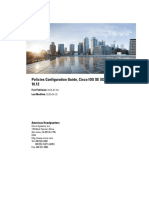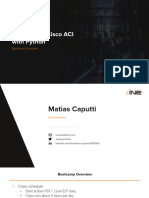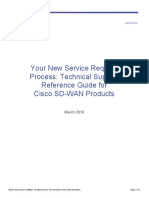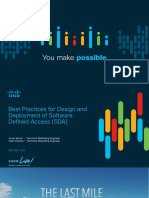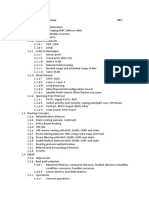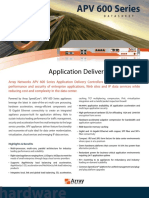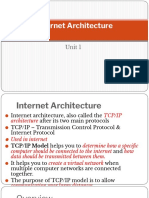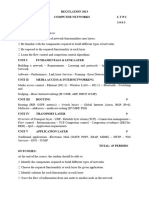100% found this document useful (1 vote)
918 views38 pagesCCIE Enterprise Infrastructure v1 Learning Matrix
This learning matrix provides resources to help the user attain certification for the CCIE Enterprise Infrastructure exam. It focuses primarily on Cisco and Cisco Press content in the form of book chapters, design documents, presentations, courses, and other materials. The matrix disclaimer notes that only using these resources may not guarantee exam passage, and encourages using other internal and external sources as well. The document provides guidance on how to effectively use the matrix by evaluating strengths and weaknesses, creating a study plan, finding tailored resources, and registering for the exam once ready.
Uploaded by
hogadCopyright
© © All Rights Reserved
We take content rights seriously. If you suspect this is your content, claim it here.
Available Formats
Download as XLSX, PDF, TXT or read online on Scribd
100% found this document useful (1 vote)
918 views38 pagesCCIE Enterprise Infrastructure v1 Learning Matrix
This learning matrix provides resources to help the user attain certification for the CCIE Enterprise Infrastructure exam. It focuses primarily on Cisco and Cisco Press content in the form of book chapters, design documents, presentations, courses, and other materials. The matrix disclaimer notes that only using these resources may not guarantee exam passage, and encourages using other internal and external sources as well. The document provides guidance on how to effectively use the matrix by evaluating strengths and weaknesses, creating a study plan, finding tailored resources, and registering for the exam once ready.
Uploaded by
hogadCopyright
© © All Rights Reserved
We take content rights seriously. If you suspect this is your content, claim it here.
Available Formats
Download as XLSX, PDF, TXT or read online on Scribd
/ 38







